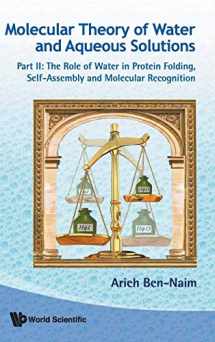
MOLECULAR THEORY OF WATER AND AQUEOUS SOLUTIONS - PART II: THE ROLE OF WATER IN PROTEIN FOLDING, SELF-ASSEMBLY AND MOLECULAR RECOGNITION
Book details
Summary
Description
This book starts out by presenting the evidence for hydrophilic interactions in biochemical processes and then goes on to describe the applications of the hydrophilic interactions in these processes, specifically protein folding, protein association, self assembly and molecular recognition.In Part I of this series, it was shown that the role of the so-called hydrophobic effect in biochemical processes was over-exaggerated. On the other hand, both experimental data and theoretical arguments support the conclusion that the hydrophilic, rather than hydrophobic interactions are the more important effects. In this volume, the author focuses on the applications of the hydrophilic interactions in processes such as solubility of proteins, protein folding, self assembly and molecular recognition. Hydrophilic interactions provide a powerful and coherent explanation of some biochemical processes, which until recently, were not understood.There are no other books of this kind. There are two books which deal with the role of hydrophobic effects (by C Tanford and A Ben-Naim), but these are quite obsolete.


We would LOVE it if you could help us and other readers by reviewing the book
Book review



